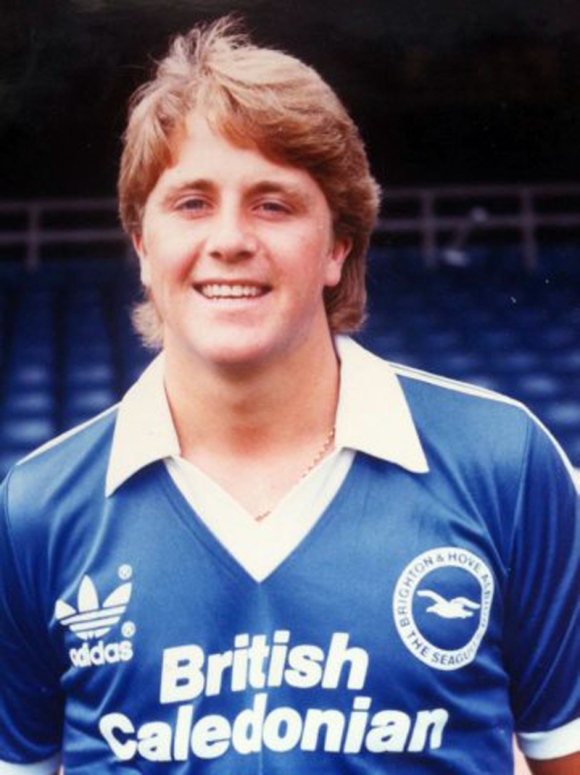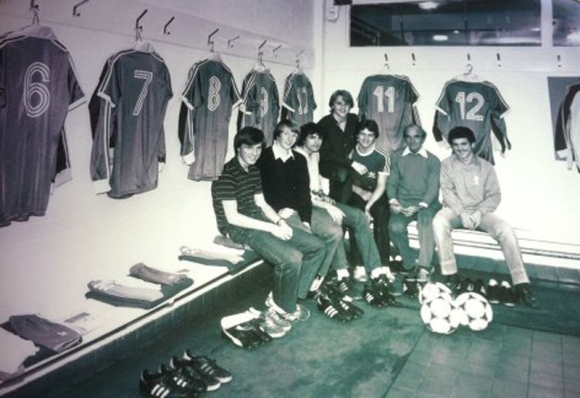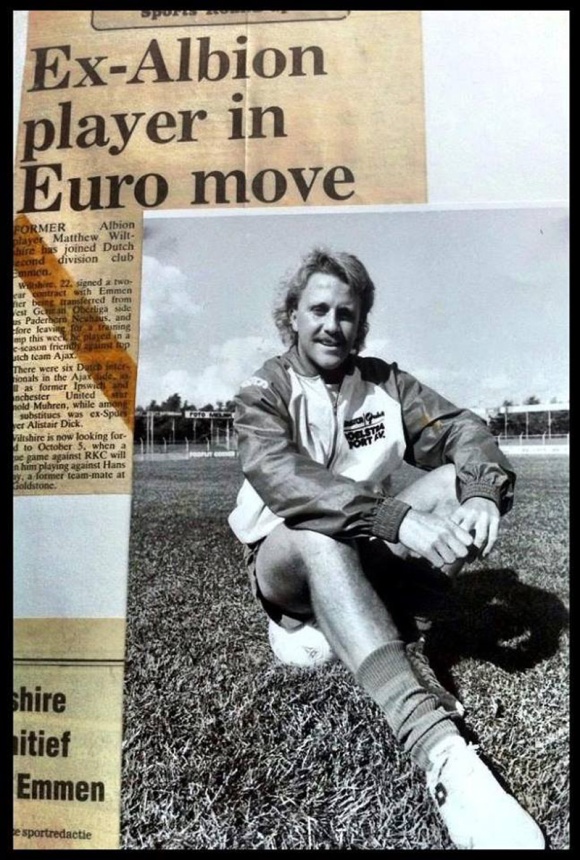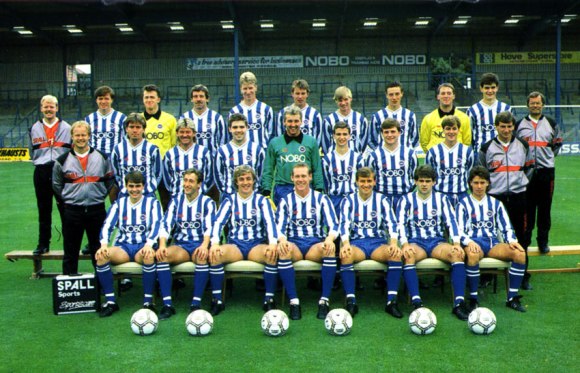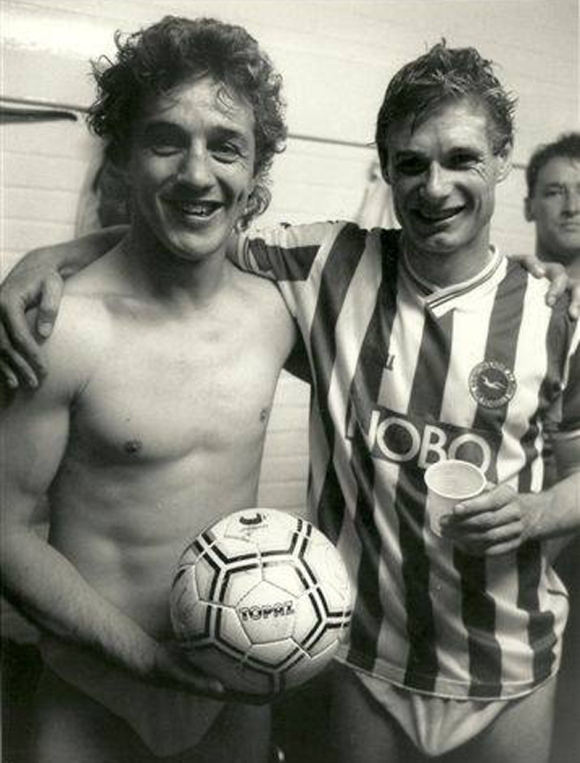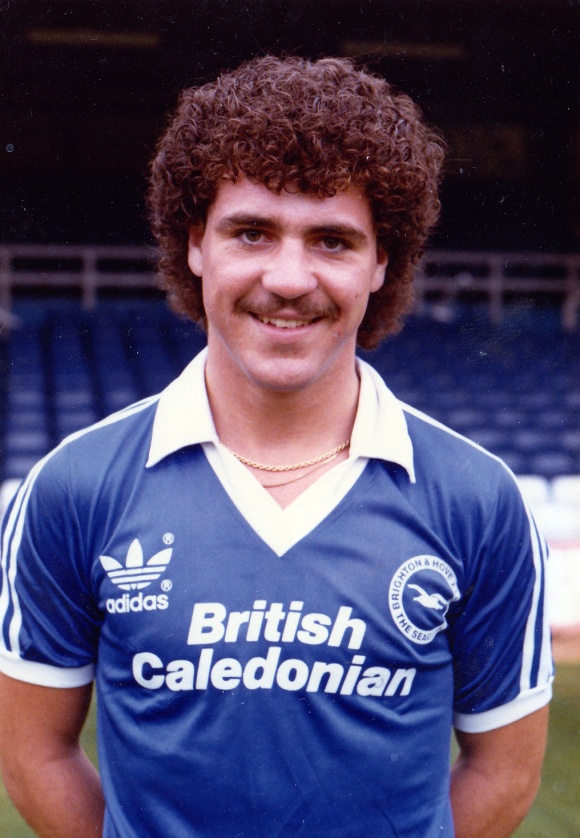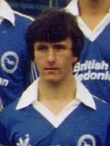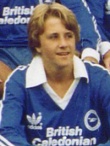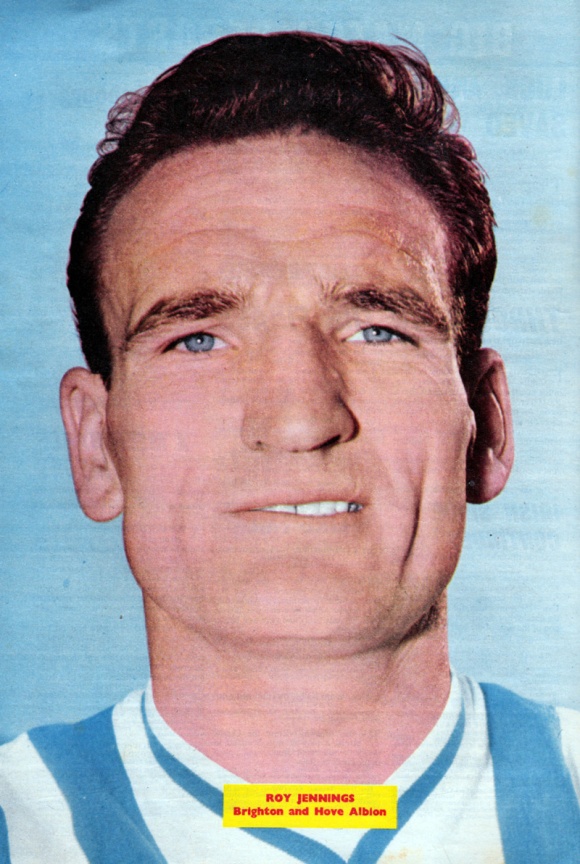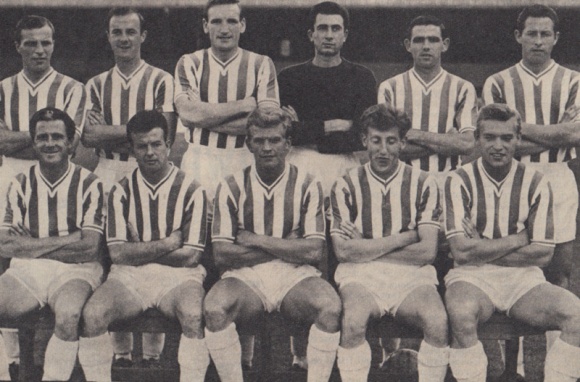I was delighted to hear from Matthew Wiltshire. He’s the father of one Cameron Wiltshire, a young, promising midfielder currently progressing through the ranks at Brighton to play in the under-18s team and development squad. As bn1&bn3 Albion commented on North Stand Chat in August 2012, Cameron:
Came on as a substitute in today’s Development Squad game. Only 16, had a good touch and well composed considering he was playing against people twice his size. Could be a great player for the future.
It’s helpful that his family are no strangers to Brighton & Hove Albion. Matthew Wiltshire came through the newly formed youth system in the late 1970s. He was an apprentice for two years and then a young pro for another couple of years. Mat went to Germany, Holland and the USA before returning to play with many clubs in senior Sussex football. Here’s a photo of the him in his Albion days:
When Matt emailed me a few months ago, he said: ‘I have recently become an avid reader of The Goldstone Wrap and your other stuff – great work’. Marvellous! Not only that, he was kind enough to answer some questions I had:
For the people who never got to see you play, could you describe what kind of player you were? What were the strengths to your game were?
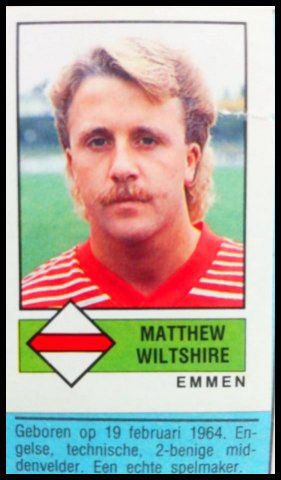 Thats a little tough to say, I was a midfielder and probably seen as technically competent 🙂 I do have a dodgy photo from a Dutch Panini Sticker book that say’s that I was a ‘two footed midfielder, a real playmaker’, but in Germany the English had a reputation for toughness, so they looked at me as more combative.
Thats a little tough to say, I was a midfielder and probably seen as technically competent 🙂 I do have a dodgy photo from a Dutch Panini Sticker book that say’s that I was a ‘two footed midfielder, a real playmaker’, but in Germany the English had a reputation for toughness, so they looked at me as more combative.
How did you get to join the Albion? How close to a first team appearance did you get?
My older brother Greg was scouted by the brand new youth system introduced by Mullery and ran by John Shepherd. I was soon mentioned and started at about 12 years old through to being released at 20 years. There was a time when Mike Bailey was manager that it looked more likely that I might be involved and was lucky enough to travel as part of the squad against Coventry away. When I signed pro I was hopeful, but I was signed as an apprentice by Mullery, a pro by Bailey, then Jimmy Melia/George Aitken were there for the FA Cup Final and Chris Cattlin gave me a free transfer. Near the end I didnt really have an ally on the coaching side, something young players need.
Which players do you most enjoy playing with? Who most looked like they would break into the first team?
It was a time of real top players and characters, Mark Lawrenson, Peter Ward, Steve Foster, Jimmy Case, Andy Ritchie, Gordon Smith, Graham Moseley, Tony Grealish, Michael Robinson, Brian Horton. For a local youngster to train and watch them close up each day was fantastic, but perhaps surprisingly the one stand out player for me was Neil McNab. No doubt he would have been appreciated in Brighton’s current team much more. He was the one for me that when I trained with him he impressed me with his tricks and technique, I liked his style of play.
When you are young, each player has their own attributes and you generally don’t immediately pinpoint those that will make it. However, you are only too aware of those who are being progressed from within the club. Gary Stevens, although a couple of years older, was progressing well and his mentality and professionalism (in today’s terms) was obvious.
After you left Brighton in 1984, who did you play for? Are there any memories that particularly stand out?
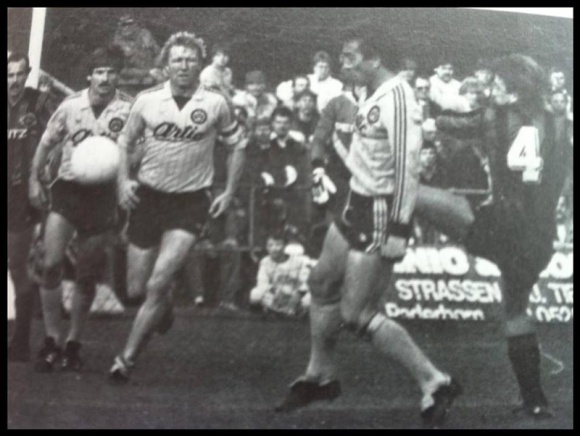
Playing against Borrussia Dortmund, Mat is the number 4 with the high-footed tackle to challenge Romanian international Raducanu whilst Hurst Hrubesch, the German International, looks on
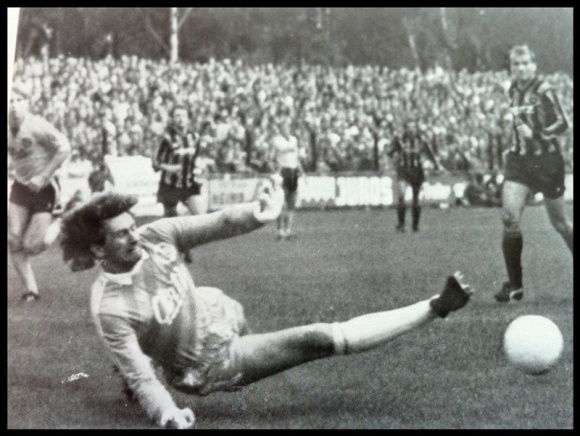
In the striped shirt second front left in the background, Mat watches his side take the lead against Dortmund
Germany: 1984 – 1986: TuS Paderborn-Neuhaus (now SC Paderborn 07). Bundesliga 2: Ex-Polish captain Jan Liberda was my coach. In 1986 we played Borrussia Dortmund in the last 16 of their FA Cup (I’ve got an old dodgy video somewhere!) winning 2-0 at half time, lost 2-4. My midfield partner Michael Henke went on to become one of the top German coaches, notably being assistant to Ottmar Hitzfield at Borrussia Dortmund and more recently was Aston Villa’s European Scout. A nice man.
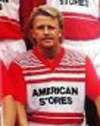 Holland: 1986 – 1987: VV Emmen Dutch 1st Division. Disappointing time, most notable exception was meeting up again with my old playing buddy Dean Wilkins. We have remained best friends ever since. Best man at wedding, Wendy and I godparents to his daughter blah blah blah and sat in the directors box this Saturday to see Reading lose to Brighton this month! 🙂
Holland: 1986 – 1987: VV Emmen Dutch 1st Division. Disappointing time, most notable exception was meeting up again with my old playing buddy Dean Wilkins. We have remained best friends ever since. Best man at wedding, Wendy and I godparents to his daughter blah blah blah and sat in the directors box this Saturday to see Reading lose to Brighton this month! 🙂
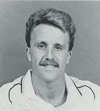 USA: 1987 – 1988: Chicago Sting: Major Indoor Soccer League. Brilliant experience, flying to games, razzmatazz, good indoor crowds. I think out of the roster of 22 professionals there was 19 nationalities! And bumping into old BHA team mates (in the loose sense of the word), Peter Ward (Cleveland Force/Witchita Wings) and Mickey Thomas (Wichita Wings) I think. Both were great blokes, but Mickey was slightly mad but very generous, would always give me stuff when we met!
USA: 1987 – 1988: Chicago Sting: Major Indoor Soccer League. Brilliant experience, flying to games, razzmatazz, good indoor crowds. I think out of the roster of 22 professionals there was 19 nationalities! And bumping into old BHA team mates (in the loose sense of the word), Peter Ward (Cleveland Force/Witchita Wings) and Mickey Thomas (Wichita Wings) I think. Both were great blokes, but Mickey was slightly mad but very generous, would always give me stuff when we met!
USA 1988: Albany Capitals: MSL.
Then played for Lewes, Worthing, Bognor, Newhaven, Eastbourne Borough, Peacehaven, Eastbourne Town.
Has the life of an apprentice changed much since you were one?
Yes, to a degree. It’s quite funny when Cameron comes home and his humour towards his fellow scholars is very similar to what we were doing 35 years ago! The biggest aspect is the education and the conundrum is that the failure rate amongst young players remains very high so the governing bodies have implemented an in-depth college course, which seems to make sense, but perhaps impinges on the scholars’ football training, rest and study of the game, so it unwittingly exacerbates the failure stats. That then prompts more focus on education and so it continues.
We used to have to clean changing rooms, boots and sometime pitch maintenance at the Goldstone, and more excitingly be in the old ‘boot room’ opposite the home dressing room on match days and see these stars of football walk by. Some would stop and talk. Even had Clough chase his star player John Robertson before a game for smoking in our bootroom!
Cameron has to clean his changing rooms and then college.
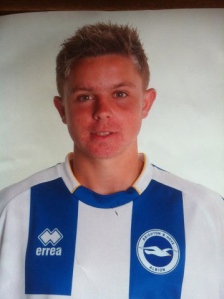 How do you think it’s helped Cameron to have a dad who has been with a professional football club?
How do you think it’s helped Cameron to have a dad who has been with a professional football club?
If you accept that coaching and advice is important to any young player then it should follow that having advice and a mentor 24/7 might help.
When did the club discover him and what progress has he made?
He was asked to train at 8 years and signed when he was 9 years old, I think he has done very well. He is a really good kid (takes after his Mum) and approaches the game in the right way. How things will progress at Brighton & Hove Albion is not yet decided, but I am sure he will be fine wherever he goes.
What’s you line of work nowadays?
I have run soccer schools for some time now including going into a few schools here in Peacehaven and in Worthing on a daily basis.

